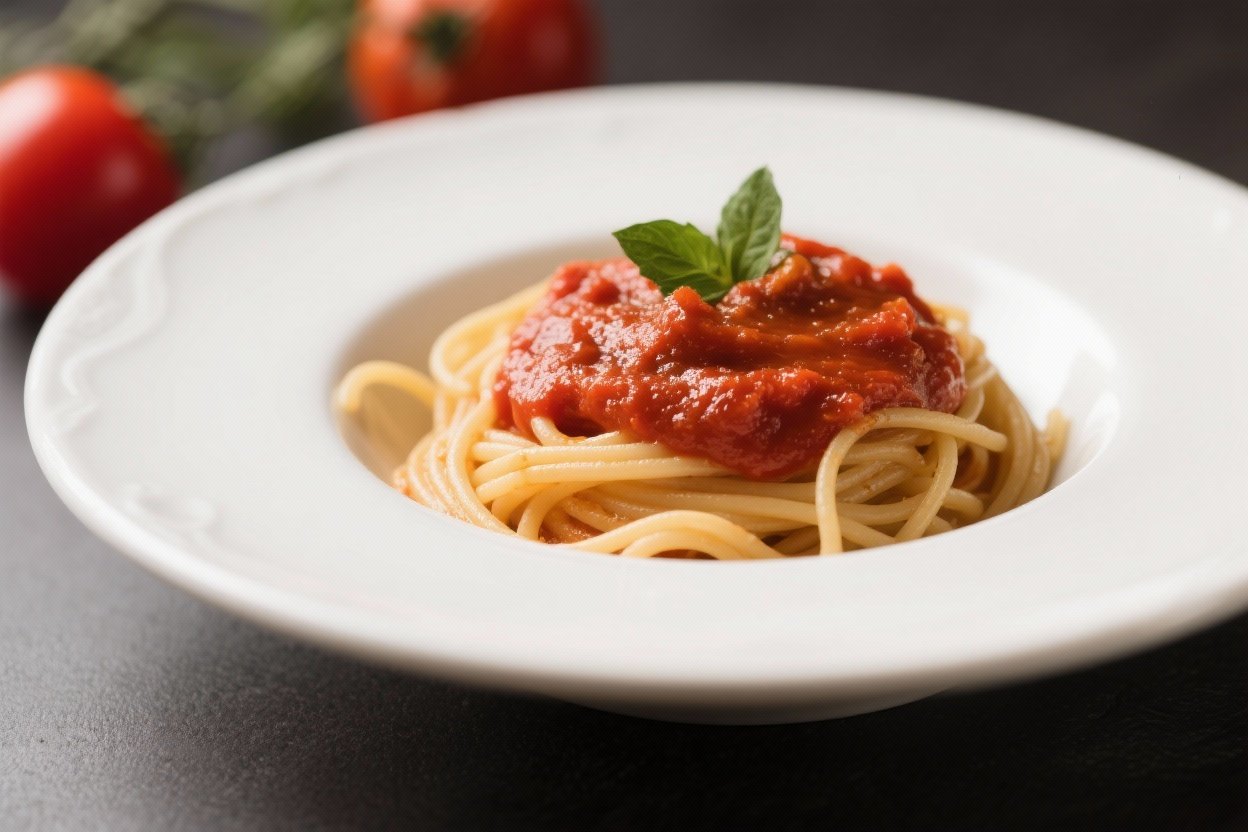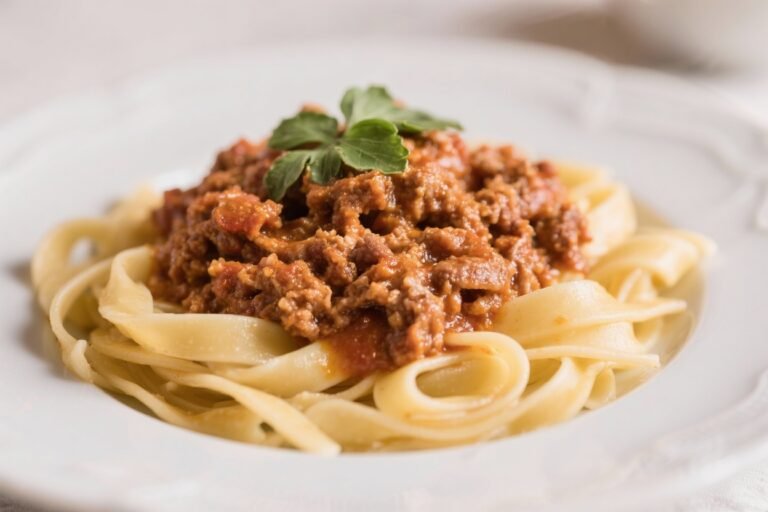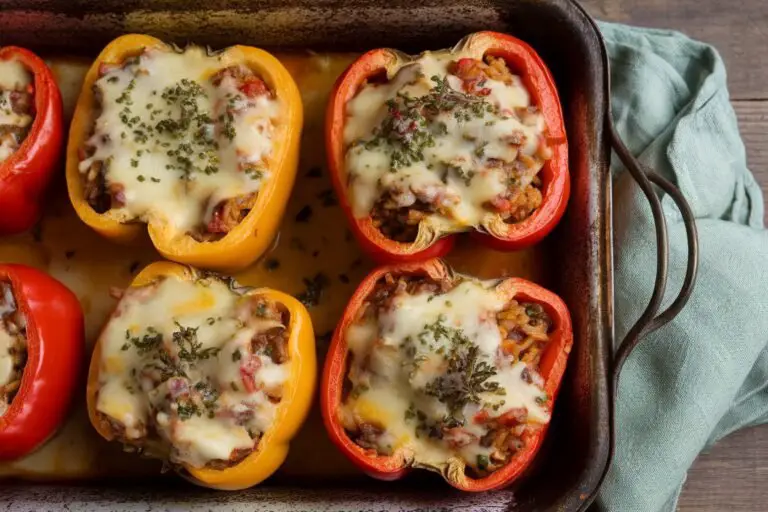Authentic Italian Tomato Spaghetti Sauce – Simple, Bright, and Full of Flavor
Italian tomato sauce isn’t about complexity. It’s about coaxing big flavor out of great tomatoes, good olive oil, and time. This sauce delivers that clean, bright, and comforting taste you find in a trattoria bowl of spaghetti al pomodoro.
It’s versatile, pantry-friendly, and deeply satisfying. If you’ve been chasing a sauce that tastes like Italy, this one’s honest, simple, and gets it right.
Why This Recipe Works
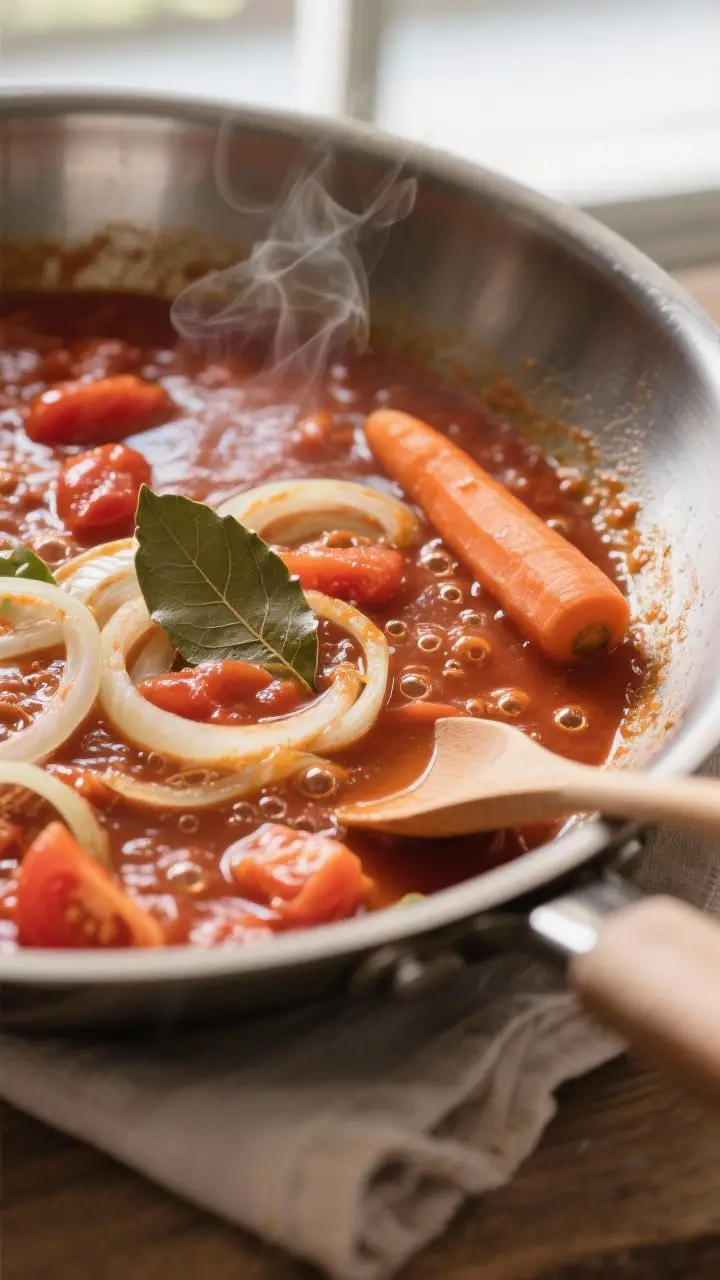
Good Italian sauce rests on restraint. We use high-quality canned tomatoes (preferably whole peeled) and a few aromatics to let the tomatoes shine.
📖 Get Access to 50+ Printable Smoothie Recipes Instantly! 🖨️
Boost your health with delicious smoothies! These easy-to-follow printable recipe eBooks are perfect for detoxing, fitness goals, and tasty plant-based living. Available for instant download on Etsy! 🌿✨
A slow simmer breaks down acidity and builds a round, sweet-savory flavor without sugar. Finishing with fresh basil and good olive oil adds freshness and body. The result is a sauce that clings to pasta and tastes clean, bright, and authentically Italian.
Ingredients
- 2 tablespoons extra-virgin olive oil, plus more for finishing
- 1 small yellow onion, finely chopped
- 2 garlic cloves, thinly sliced
- 1 can (28 ounces) whole peeled San Marzano tomatoes (or other high-quality whole tomatoes)
- 1 small carrot, peeled and cut in half (optional, for natural sweetness)
- 1 bay leaf (optional)
- 1 small pinch red pepper flakes (optional, for gentle heat)
- 1 teaspoon kosher salt, plus more to taste
- Freshly ground black pepper, to taste
- 6–8 fresh basil leaves, torn
- 12 ounces dried spaghetti
- 2 tablespoons unsalted butter (optional, for silkiness)
- Freshly grated Parmigiano-Reggiano, for serving
How to Make It

- Prep the tomatoes. Pour the canned tomatoes into a bowl and crush them by hand.
Remove any tough stem ends. Reserve all juices.
- Sweat the aromatics. In a wide saucepan, warm the olive oil over medium heat. Add the onion with a pinch of salt.
Cook 6–8 minutes, stirring, until softened and translucent, not browned.
- Add garlic and optional heat. Stir in the sliced garlic and red pepper flakes. Cook 30–45 seconds until fragrant. Avoid browning the garlic.
- Build the sauce. Add the crushed tomatoes and their juices.
Nestle in the carrot and bay leaf if using. Season with 1 teaspoon salt and a few twists of pepper.
- Simmer gently. Bring to a lazy simmer. Reduce the heat to low and cook uncovered for 30–40 minutes, stirring occasionally.
The sauce should thicken and lose any sharp acidity.
- Adjust texture. Remove the carrot and bay leaf. For a rustic sauce, leave it as is. For smoother texture, use an immersion blender for a few quick pulses until it’s as silky as you like.
- Finish with basil and richness. Off the heat, stir in torn basil leaves and, if you want extra body, the butter.
Taste and adjust salt and pepper. Add a drizzle of extra-virgin olive oil for aroma.
- Cook the spaghetti. Boil in well-salted water until just shy of al dente. Reserve 1 cup of pasta water.
- Marry pasta and sauce. Add drained spaghetti to the sauce.
Toss over medium heat with a splash of pasta water until the sauce clings and the pasta finishes cooking, 1–2 minutes.
- Serve. Plate with more basil, a drizzle of olive oil, and a shower of Parmigiano-Reggiano.
How to Store
- Refrigerator: Cool completely, then store in an airtight container for up to 5 days.
- Freezer: Portion into freezer-safe containers or bags. Freeze up to 3 months. Thaw overnight in the fridge.
- Reheating: Warm gently over low heat.
Add a splash of water or olive oil if it’s too thick. Re-season with salt and fresh basil before serving.
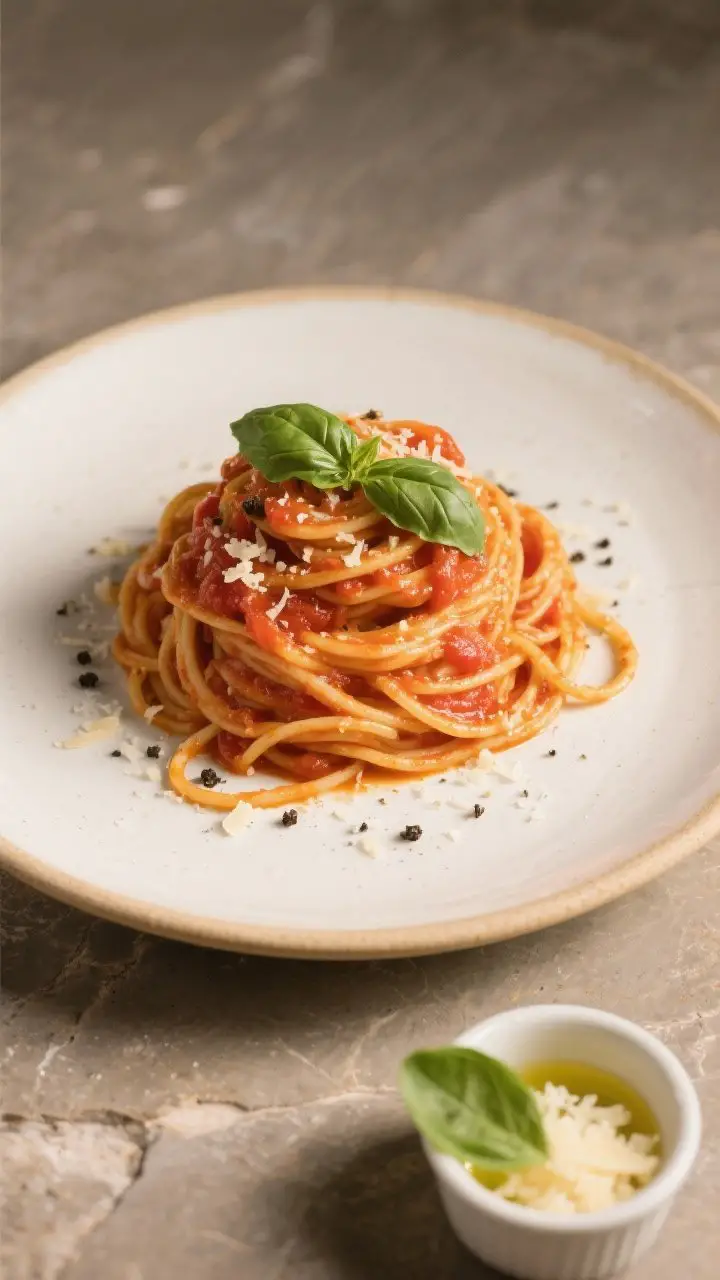
Health Benefits
- Lycopene-rich tomatoes: Cooking tomatoes boosts lycopene availability, an antioxidant linked to heart health.
- Olive oil: Provides healthy monounsaturated fats that support heart health and help absorb fat-soluble nutrients.
- Lower added sugar: This recipe relies on slow cooking and a carrot for natural sweetness, avoiding added sugar.
- Portion control friendly: The sauce is nutrient-dense yet light, making it easy to pair with whole-grain or legume pasta for extra fiber and protein.
What Not to Do
- Don’t rush the simmer. A quick boil keeps acidity high and flavor flat. Gentle heat is key.
- Don’t burn the garlic. Bitter garlic can ruin the entire pot.
Add it after onions soften and cook briefly.
- Don’t overload with herbs and spices. Authentic sauce is simple. Too many seasonings muddy the tomato flavor.
- Don’t skip salting the pasta water. It’s the foundation of well-seasoned pasta and helps the sauce taste balanced.
- Don’t rinse the pasta. Starch on the noodles helps the sauce cling beautifully.
Alternatives
- Tomato type: Whole peeled San Marzano tomatoes are classic. If using crushed or passata, reduce simmering time slightly.
Fresh tomatoes can be used in peak season; peel, core, and cook a bit longer.
- Onion-garlic base: Prefer a lighter onion note? Use half an onion or swap in a small shallot. For deeper flavor, add a short spoon of tomato paste and cook 2 minutes before adding tomatoes.
- Herbs: Basil is traditional.
For a winter twist, add a small sprig of thyme or a leaf of sage during simmering, then remove.
- Heat level: Omit red pepper flakes for a pure sweet-tomato profile, or use a pinch more for a gentle kick.
- Vegan or dairy-free: Skip the butter and finish with an extra spoon of olive oil for body.
- Pasta choices: Spaghetti is classic, but this sauce hugs bucatini, linguine, or penne just as well. Whole-wheat or chickpea pasta brings extra fiber or protein.
- Protein add-ins: Fold in cooked meatballs, Italian sausage, or tuna packed in olive oil for a heartier meal.
FAQ
Can I use fresh tomatoes instead of canned?
Yes. Choose ripe, meaty tomatoes like Roma or plum.
Peel and core them, then cook 45–60 minutes to concentrate flavor. You may need an extra pinch of salt and a little more olive oil.
Why add a carrot?
The carrot gently balances acidity without sugar. It infuses subtle sweetness and is removed before serving, keeping the sauce clean and bright.
How do I fix a sauce that’s too acidic?
Simmer longer to reduce sharpness.
Add a small knob of butter or a splash of olive oil to round the edges. If needed, a pinch of baking soda can help, but use sparingly.
What’s the best way to make it smoother?
Blend briefly with an immersion blender or pass through a food mill. Keep some texture so it still grips the pasta.
Can I double the recipe?
Absolutely.
Use a wide pot to encourage evaporation and keep the simmer gentle. Season gradually and taste at the end.
Is Parmigiano-Reggiano essential?
It’s traditional and adds umami, but the sauce stands on its own. For dairy-free, finish with extra basil and olive oil.
Can I make it ahead?
Yes.
The flavor improves after a day in the fridge. Reheat gently and refresh with basil and a drizzle of olive oil before serving.
What if I only have crushed tomatoes?
Use them. Start with a 25–30 minute simmer, then adjust.
Taste and tweak salt and olive oil as needed.
How salty should the pasta water be?
Like the sea. About 1–1.5 tablespoons of kosher salt per 4 quarts of water is a good guide.
Can I add wine?
Yes, a small splash of dry white or red wine can be added after the garlic. Let it reduce by half before adding tomatoes for a subtle depth.
Final Thoughts
This sauce proves that simple ingredients, treated with care, can taste extraordinary.
With good tomatoes, patient simmering, and a handful of basil, you get a pasta night that feels special without fuss. Keep a few cans of whole tomatoes on hand and you’re never far from a great bowl of spaghetti. Make it once, then make it yours with small, thoughtful tweaks.
That’s the Italian way—uncomplicated, generous, and always driven by flavor.

